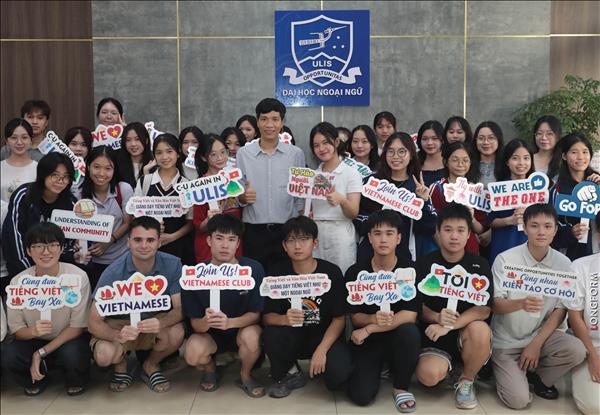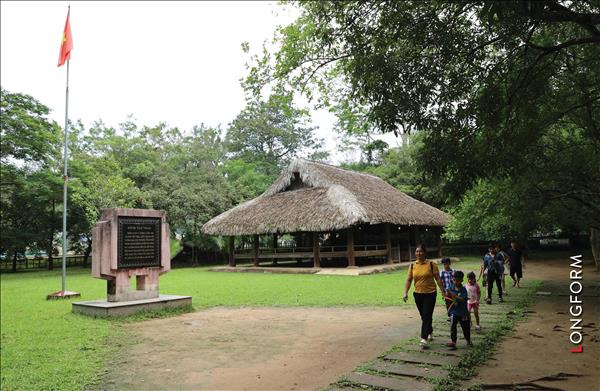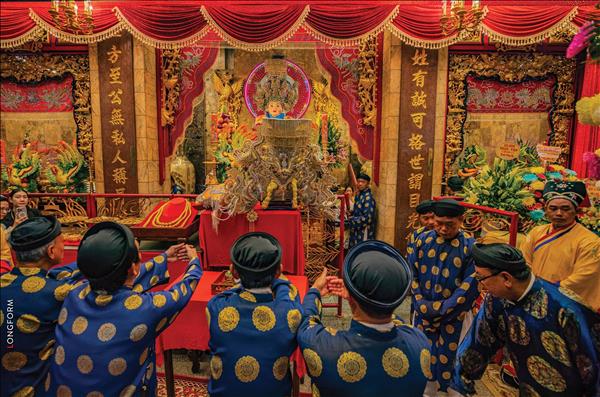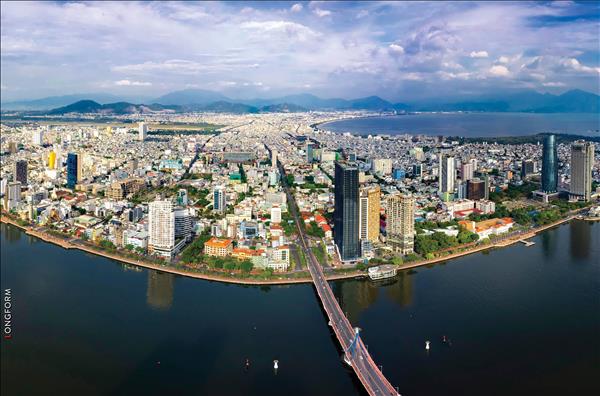Rural villages: The “cradle" of Hanoi cuisine
The suburbs of Hanoi have many villages with long histories of creating delicious dishes. The food is usually associated with its hometown’s name such as Thanh Tri steamed rolls, Phu Thuong sticky rice, Vong village com, Phu Do Ngan noodles, Lo Khe chung cake and Uoc Le pork sausage. Vietnamese culinary villages are rooted in its households. The tradition is kept alive by passing down recipes through generations, which are keys to the food’s identity.
Recently, we went to Uoc Le village, Thanh Oai district to experience the atmosphere of making the popular Vietnamese pork sausage. The making of Uoc Le sausage has been around for about 500 years. During the feudal period, the dish could only be seen on banquet tables of the elite. During the French colonialism, Uoc Le sausage made some restaurants in Hanoi very popular, such as Tan Viet in the Old Quarter and Tan Loi in Ha Dong. In 1958, the Tuyen Thanh sausage brand of Uoc Le was exported to France. During the subsidy period, Uoc Le sausage was considered a luxury.
Hoang Ba Hop's family is well-known in Uoc Le village, which has preserved and developed the sausage-making profession for three generations. Hoang Thi Oanh is the third generation of the family that has continued the family tradition and established the famous Gio Cha Xuan Huong cooperative in Hanoi which now owns 4 production facilities. Xuan Huong products have been certified by Hanoi's One Commune One Product (OCOP) system and is distributed to supermarkets and traditional markets in Hanoi. It also is a delicious choice for a souvenir for many international tourists visiting the capital.
The suburbs of Hanoi have many villages with long histories of creating delicious dishes. The food is usually associated with its hometown’s name such as Thanh Tri steamed rolls, Phu Thuong sticky rice, Vong village com, Phu Do Ngan noodles, Lo Khe chung cake and Uoc Le pork sausage. Vietnamese culinary villages are rooted in its households. The tradition is kept alive by passing down recipes through generations, which are keys to the food’s identity.
Recently, we went to Uoc Le village, Thanh Oai district to experience the atmosphere of making the popular Vietnamese pork sausage. The making of Uoc Le sausage has been around for about 500 years. During the feudal period, the dish could only be seen on banquet tables of the elite. During the French colonialism, Uoc Le sausage made some restaurants in Hanoi very popular, such as Tan Viet in the Old Quarter and Tan Loi in Ha Dong. In 1958, the Tuyen Thanh sausage brand of Uoc Le was exported to France. During the subsidy period, Uoc Le sausage was considered a luxury.
Hoang Ba Hop's family is well-known in Uoc Le village, which has preserved and developed the sausage-making profession for three generations. Hoang Thi Oanh is the third generation of the family that has continued the family tradition and established the famous Gio Cha Xuan Huong cooperative in Hanoi which now owns 4 production facilities. Xuan Huong products have been certified by Hanoi's One Commune One Product (OCOP) system and is distributed to supermarkets and traditional markets in Hanoi. It also is a delicious choice for a souvenir for many international tourists visiting the capital.
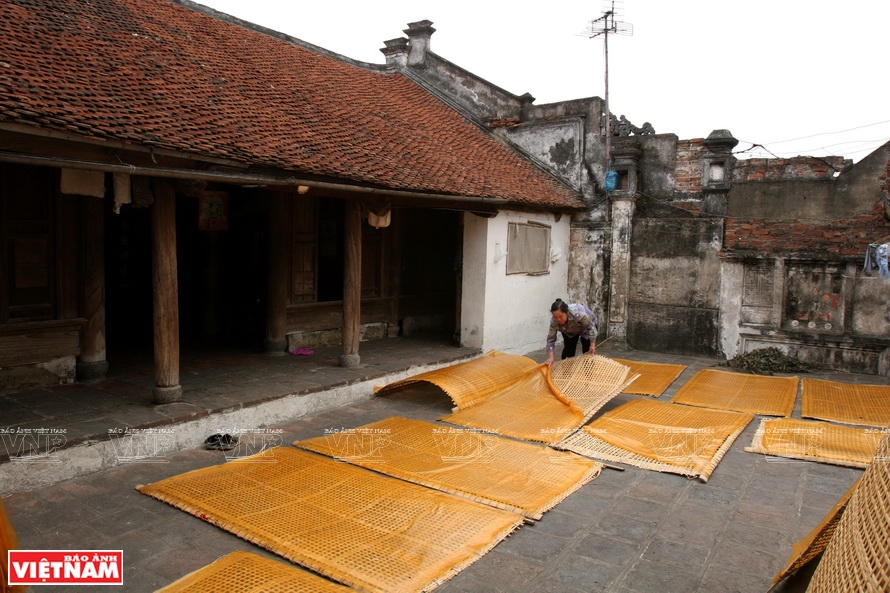 Making fresh rice vermicelli in Cu Da village, Thanh Oai, Hanoi. Photo: VNP 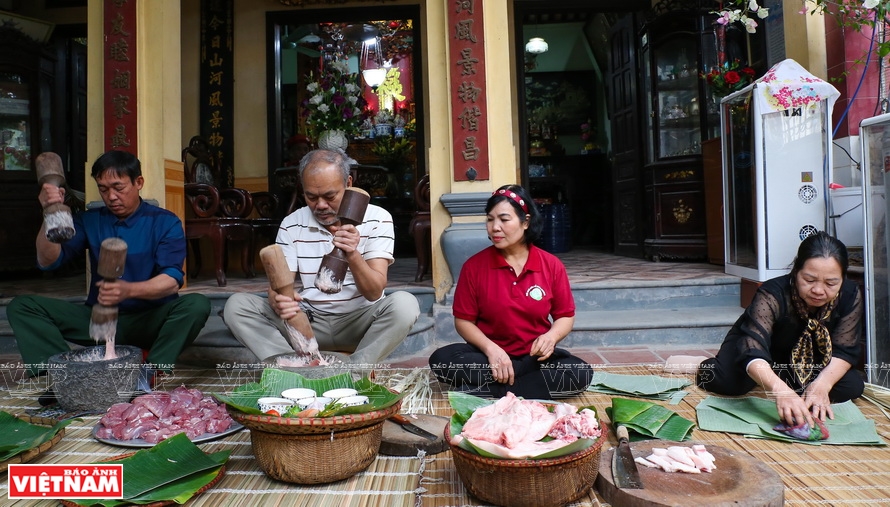 Tools used to make Uoc Le sausages include a stone mortar, wooden pestle and banana leaves. Photo: Khanh Long / VNP 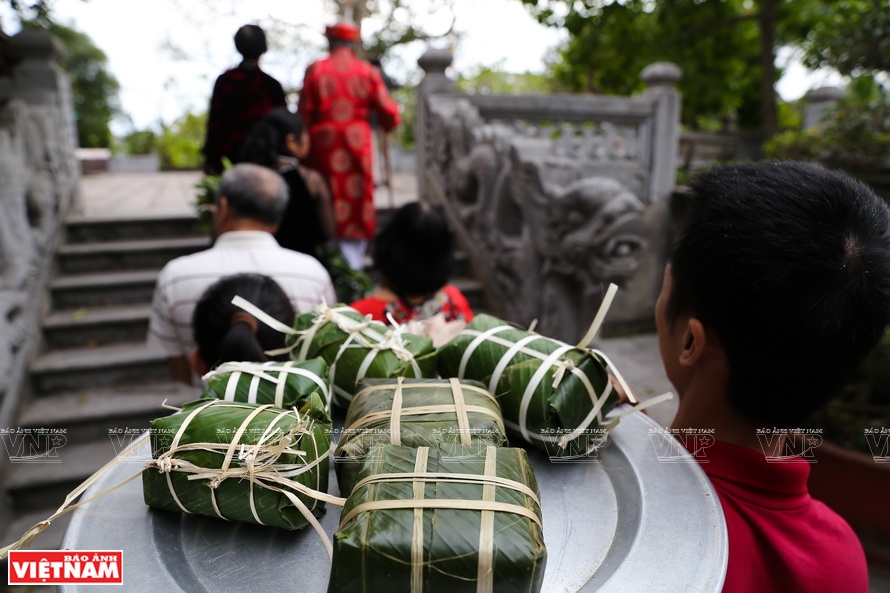 Vietnamese pork sausages, chung cakes and day cakes offered to the ancestors from Uoc Le village. Photo: Khanh Long / VNP  Removing the bran layer and germs to have clean com in Me Tri village, Tu Liem. Photo: Cong Dat / VNP 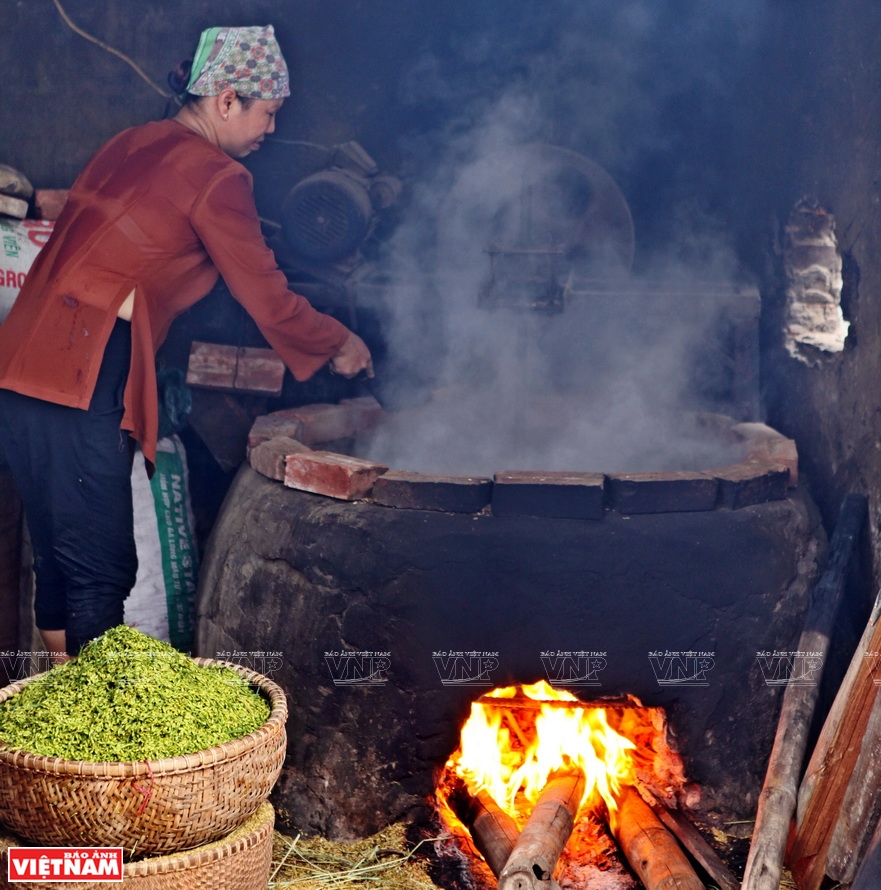 Com roasting process in Me Tri village. Photo: Cong Dat / VNP Making chung cakes in Lo Khe village, Dong Anh. Photo: Thanh Giang / VNP Nguyen Thi Lanh, chairwoman of the Madame Lanh's chung cake cooperative has more than 60 years of experience making traditional chung cakes. Photo: Thanh Giang / VNP |
Today, Uoc Le village has about 500 households making sausages. Villagers keep alive the profession and have expanded its products nationwide. Many people living in the US and France still make spring rolls for overseas Vietnamese communities.
With the same enduring vitality, Lo Khe chung cake village in Dong Anh is also an important product. Chung cake, which is associated with the roots of the Vietnamese people, is an ever-present offering during the Hung Kings’ festival and during the Tet holiday. Welcoming visitors to Madame Lanh’s chung cake cooperative gives one a busy and bustling working vibe. “My family has been making chung cakes for four generations. Chung cakes are the pride of Lo Khe village and the pride of farmers who have continued with their profession,” said Madame Lanh, head of the cooperative. Currently, the brand of Lo Khe chung cakes is certified 3-stars by the OCOP system.
|
“Even if I was kidnapped and taken to a strange land for a thousand years, I will still be Vietnamese because I can never forget the delicacies of Hanoi.” Wrote author Vu Bang in the book “Hanoi Delicacies” |
Hanoi has two well-known places to make com (young rice): Vong village (Cau Giay) and Me Tri (Nam Tu Liem). Com is made from young rice through a complex multi-stage process. If you go to Vong village during com season, the aroma of young rice will welcome visitors right from the moment of their arrival at the village gate. Visitors can experience the very interesting process of making com in households here, where Vong villagers still keep the tradition of making com entirely by hand. The charm of Vong village com and Me Tri com, following in the footsteps of street vendors, has captivated many international food lovers.
Street food
Going beyond the village space, suburban food has come to the streets of Hanoi and formed chains of street food culture where anyone can find something that satisfies their taste buds. The culinary division of CNN recently came to Vietnam and introduced Hanoi cuisine to the world through a series of reports.
It can be said with absolutely no exaggeration that Hanoi is the cultural space of the Vietnamese dish that has made global name: Pho. Pho now has its’ place in many parts of the world, but Hanoi will always have and always will be the place where diners can enjoy its most delicate flavor.
No one knows for sure the exact time when pho appeared in Hanoi. It is a fact that even the oldest Hanoians have grown up with the taste of pho. The dish also has significant presence in literature and poetry. It is not only a delicious and nutritious dish but also a symbol of Hanoi's sophisticated culinary culture.
|
Hanoi food is sold at eateries in Hanoi's Old Quarter. Photo: Thanh Giang / VNP
Tourists enjoy Hanoi specialties on Ta Hien street. Photo: Thanh Giang / VNP
Pho - the most popular breakfast for Hanoians. Photo: Thanh Giang / VNP
Hot bagel twists are ready to serve diners on the streets. Photo: Thanh Giang / VNP
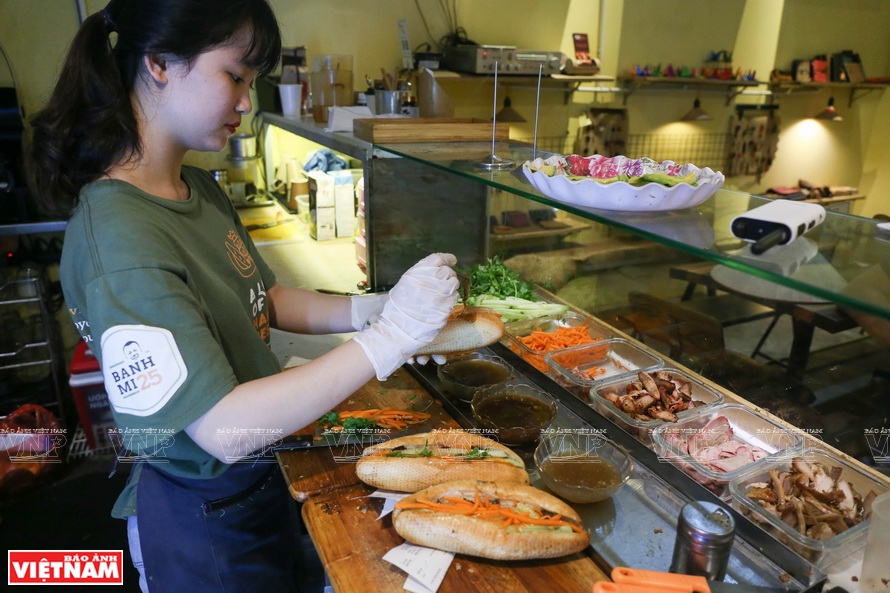
Banh Mi 25 is incredibly popular with foreigners in Hanoi. Photo: Thanh Giang / VNP
Tourists enjoy street food on Dao Duy Tu street. Photo: Thanh Giang / VNP Huong Lien Bun Cha restaurant on Hanoi’s Le Van Huu street, where former US President Barack Obama stepped inside to have dinner in 2016. Photo: Thanh Giang / VNP Ngon restaurant serves the most popular Vietnamese specialties in Hanoi. Photo: Thanh Giang / VNP 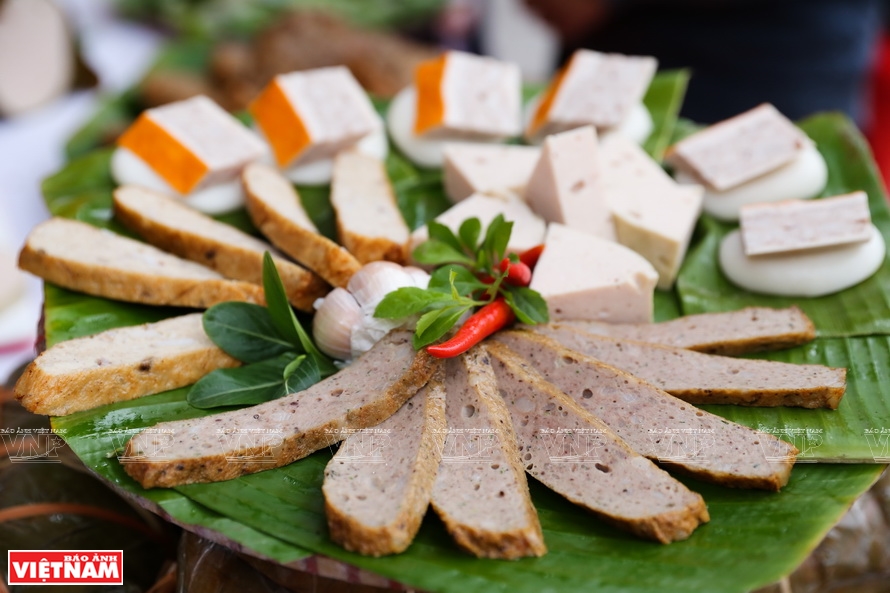 Uoc Le traditional pork sausages. Photo: Thanh Giang / VNP 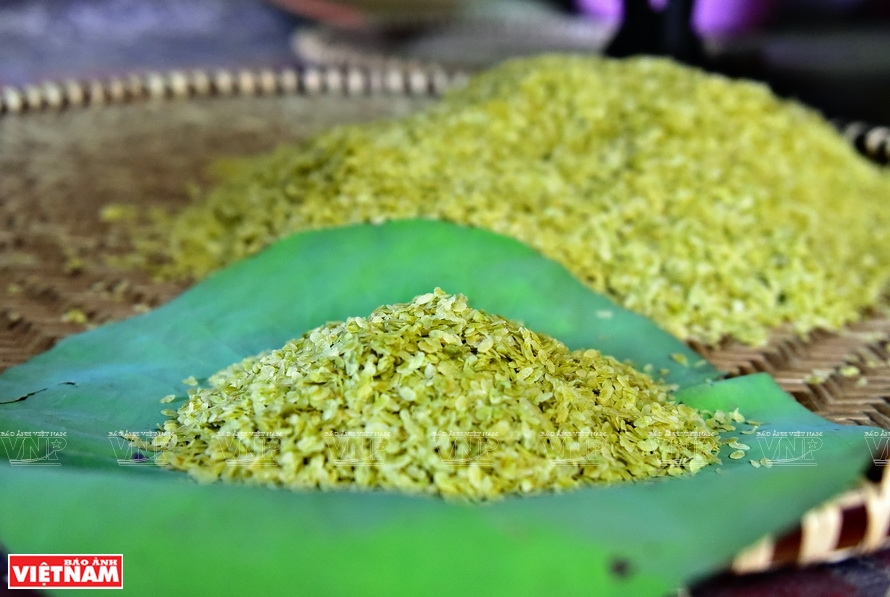 Me Tri com. Photo: Cong Dat / VNP Me Tri com. Photo: Cong Dat / VNP |
Marko Nikonic, a Serbian writer who is living and working in Hanoi, said, “I have traveled across Vietnam and fell in love with the food of Hanoi. I still remember how much I was impressed by the image of groups of high-schoolers flocking to Vong village com after school. In my free time, I like to go to the street to enjoy a plate of Thanh Tri steamed rolls while watching people strolling around. Life in Hanoi is ‘worthy’ because of such peaceful moments.”
| Food is the shortest way to bring Hanoi to the world. |
Not only Marko, but many foreigners who come to Vietnam find many opportunities to enjoy rural cuisine right on the streets of Hanoi. Quan Ngon (18 Phan Boi Chau) is a reasonable choice for visitors where they can experience many traditional delicacies that have made Hanoi's identity such as, bun rieu cua (Vietnamese crab noodle soup), chicken pho, Thanh Tri steamed rolls, com cake, Vietnamese sausage and Quan Ganh day cake.
Designed to be reminiscent of the beauty of old Hanoi, Quan Ngon is a model that offers diners a full experience of the quintessence of Hanoi’s rural cuisine. “Hanoi rural cuisine has a smart way of complimenting itself. For example, steamed rolls are eaten with cha que (cinnamon-flavored pork sausage), chung and day cakes are served with Vietnamese pork sausage. All those flavors are imbued with Vietnamese countryside culture and give life to the dish,” said Natasha, an Australian tourist.
A walk around Hanoi's Old Quarter is all visitors need to find dining places that will satisfy their senses. It is no coincidence that Hanoi delicacies are internationally honored. Pho Hanoi was voted at position 28/50 on CNN's list of the world's best dishes; bun cha was voted as one of the 10 best street foods in National Geographic by tourists; bun rieu cua was shared by Traveler Magazine as one of the 21 most delicious dishes in the world; cha ruoi has been introduced by AFP news agency as one of Hanoi's winter favorite specialties. This confirms the cultural value of Hanoi cuisine on the international tourist map.
| In 2016, former US President Barack Obama and the late Anthony Bourdain enjoyed bun cha on Le Van Huu street; British Prince William enjoyed coffee in the Old Quarter and former French President Francois Hollande drank coffee on Ma May Street in 2016. In 2018, South Korean President Moon Jae-in and his wife enjoyed pho bo (beef pho) in Hanoi. Most recently, in February 2019, Argentine President Mauricio Macri enjoyed coffee on Hanoi's pavement. |
Story: Bich Van Photos: Thanh Giang, Khanh Long, Cong Dat & VNP Translated by Hong Hanh

